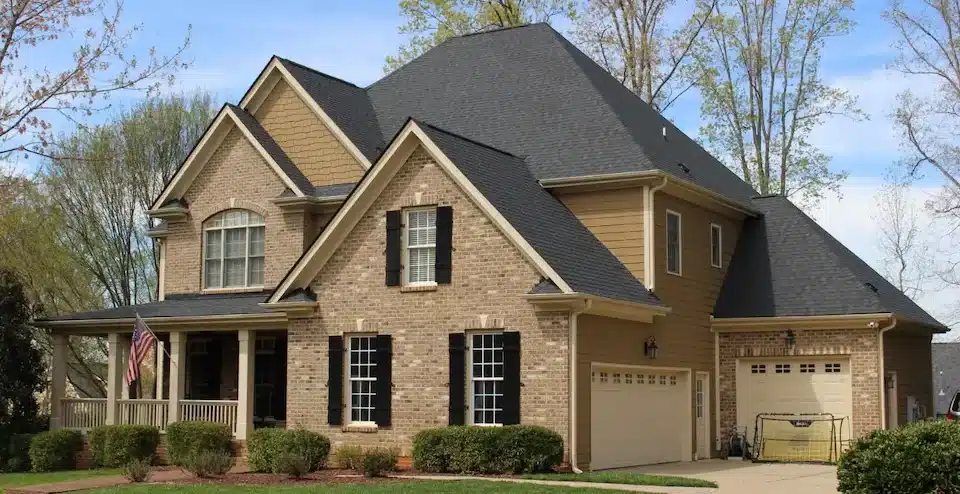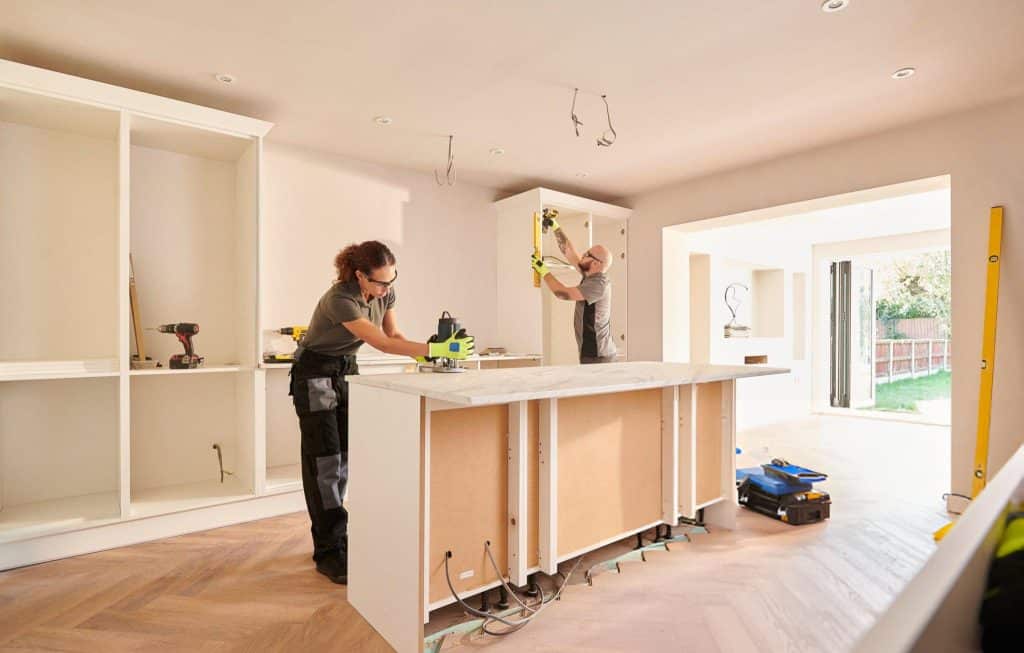Stuck between choosing ventilation or aesthetics?
I know, it can get pretty overwhelming when you’re trying to choose between different roofing types while upgrading your home. Suddenly, you’re thrown into a world of construction terms that sound more confusing than helpful. And hip roofs and gable roofs? Yep, they’re right at the top of that list. Heard those terms for the first time? Don’t worry; I’m here to break them down for you. A hip roof is a style where all sides of the roof slope downward, meeting at a ridge or point. A gable roof, on the other hand, has just two sloping sides that form a triangle. In this guide, we’ll walk through both roof types, their pros and cons, and help you decide which one’s the better fit for your home. Let’s make roofing simple.
What Is a Hip Roof?
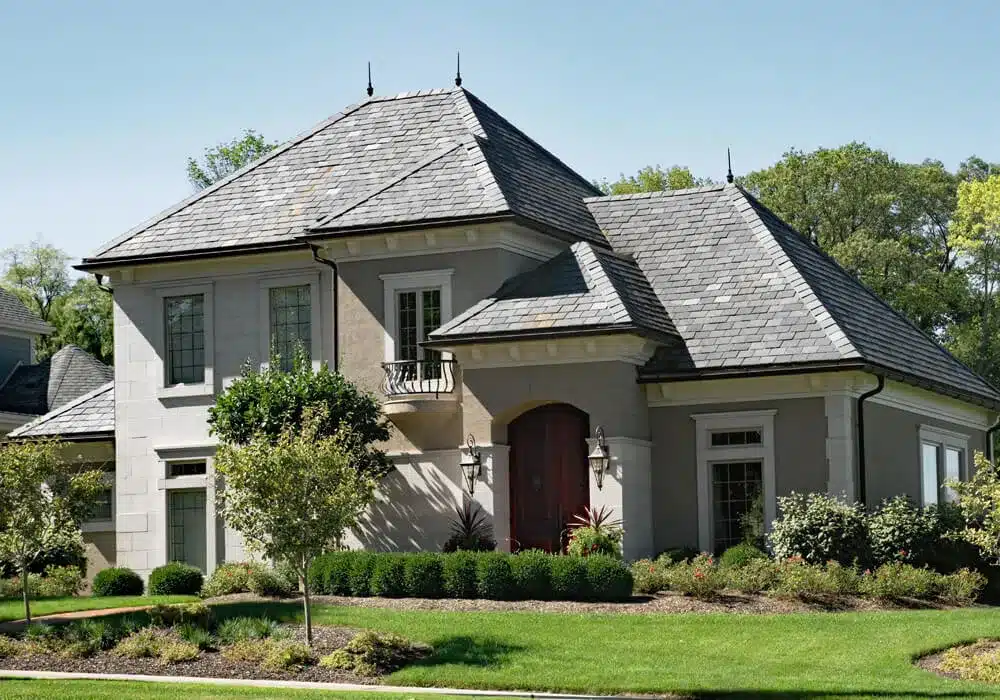
Credit: costguide.com
We will start by defining both types of roofs in detail. A hipped roof (or just “hip roof”) is a type of roof with sloping sides that meet at the top. Every side of the roof gently slopes down toward the walls, so there are no vertical ends. The shape often looks like a pyramid or a tent, especially on square homes.
This roof design is super popular in high-wind or snowy areas because it’s stable and sleek. Since the wind flows over the surface rather than hitting a wall, hip roofs perform better in storms.
Hipped Roofs in Action
You’ll find hip-style roofs on everything from ranch homes to cottages to modern builds. They’re especially ideal for complex designs like homes with 4 dormers, or a roof on a square footprint. Need a durable hip roof shed for your backyard? This design works perfectly there, too.
Now, folks, if you live in an area with high winds or heavy rain? A hipped roof might be your safest bet.
Contact us at General Construction & Remodeling; we’ll help you choose the right materials and layout.
Types of Hip Roofs
You might not know, but hipped roofs have several types. Here are a few roofing styles that fall under the hip category:
- Simple Hip: Four equal slopes that meet at a ridge. Clean and classic.
- Pyramid Hip: A pyramid-shaped roof, ideal for square structures.
- Cross-Hipped Roof: Two hip roofs that intersect; great for complex design layouts.
- Dutch Roof: A hybrid between gable and hip; adds vertical space.
- Hip Roof with Dormers: Adds charm and upper slope ventilation with extra roof structures.
Benefits of a Hip Roof
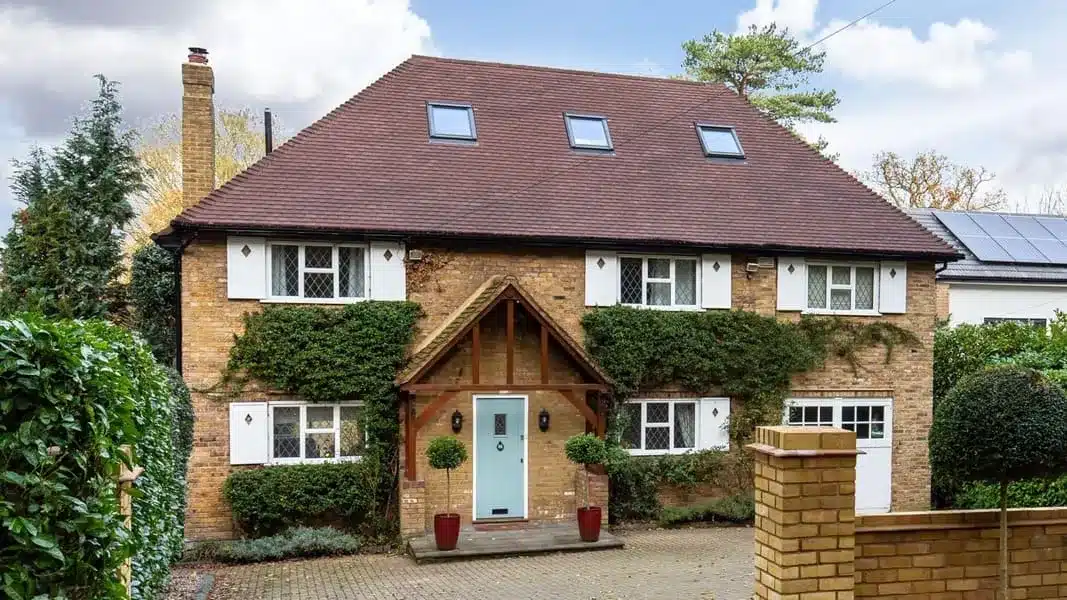
Credit: homebuilding.co.uk
Now we are clear about the structure of a hip roof, right? It’s better if we talk about its benefits. Choosing a hipped roof comes with more than just good looks; it offers solid protection and reliable performance, especially in areas with extreme weather.
- Stable in High Winds: Well, thanks to its sloping sides that meet at a central ridge, this type of roof performs well in hurricanes and storm-prone zones. Its aerodynamic shape resists wind uplift better than many other roof styles, especially in the battle of hip roof vs gable roof stability.
- Drains Easily: Because there are no flat surfaces or vertical gable ends, water runs off on all sides. That makes hipped roofs a smart choice for areas with heavy rain or snowfall.
- Even Weight Distribution: The design evenly spreads weight across the roofing materials, making it ideal for snowy climates. Homes with a roof on a square layout especially benefit from this feature.
- Boosts Curb Appeal: The clean symmetry of a hip-style roof complements a variety of architectural looks, including modern, traditional, and coastal homes.
Downsides of a Hip Roof
Still, even a solid roof design like this has its drawbacks. Here’s what to think about before going all-in on a hip vs gable roof decision.
- Higher Cost: A major con in the hip roof vs gable roof cost debate is price. A hip roof requires more framing, labor, and roofing materials, which can increase both time and budget. It’s also more involved if you’re trying to learn how to roof a hip roof with 4 dormers or customize it for a complex design.
- Less Attic Space: The inward-sloping sides cut into usable attic space compared to gable roofing. If storage or upper-floor expansion is a priority, this may be limiting.
- More Roofing Materials: Covering all four sloping sides that meet at the top takes more shingles and wood. Whether it’s a roof shed or a full-size house, material needs go up with this sided roof design.
- Trickier Ventilation: Without gable vents, airflow in a hipped roof can be harder to manage. It may require ridge or soffit vents and added planning to ensure proper ventilation across the upper slope of your home.
What Is a Gable Roof?
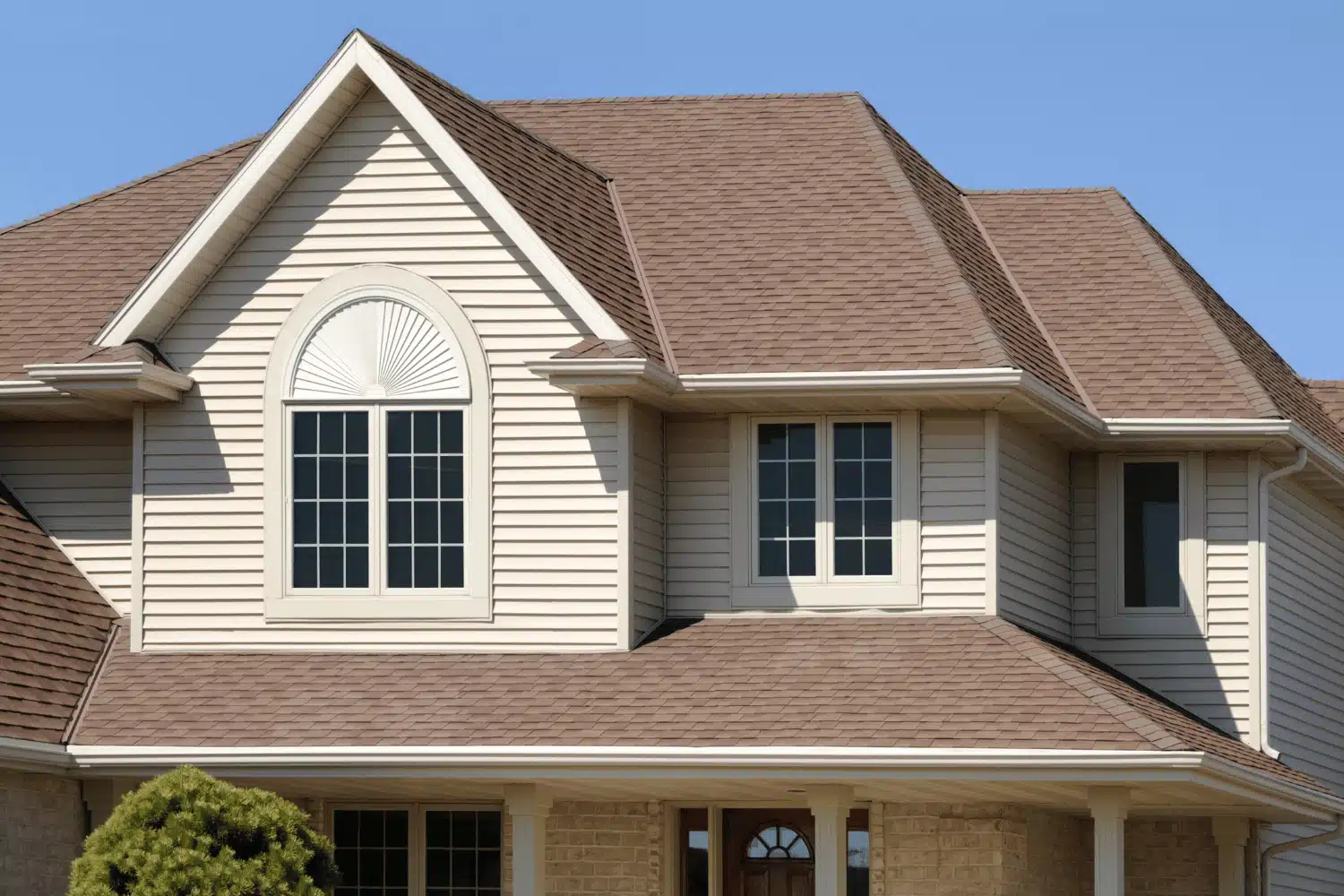
Credit: comoexteriors.com
Next up, we have this classic type. The gable roof is the classic triangular-shaped design. It has two sloping sides that meet at a ridge, forming gable ends (flat, vertical walls on each side).
It’s simple, effective, and widely used across North America. From cozy farmhouses to colonial homes, gable roofing is timeless.
And if you’re wondering what a gable end is, it’s the wall underneath those two roof slopes, shaped like a triangle.
More Room + Better Airflow
Thanks to its side roof structure, gable roofs offer more attic space and better ventilation. You can add a loft, create storage, or simply improve air movement with gable vents.
Want a Roof That’s Practical and Budget-Friendly?
If you’re leaning toward simplicity and affordability, gable roofing might be the smarter option.
Fortunately, General Construction & Remodeling can help you with free estimates, expert advice, and easy installation, no matter if it’s a hip or gable roof. So, get in touch with us now.
Types of Gable Roofs
Here’s a quick rundown of gable vs hip roof variations:
- Front Gable Roof: The gable faces the street, which is common in traditional homes.
- Side Gable Roof: Gables are on the house sides; the peak runs front to back.
- Cross Gable Roof: Two gable sections that intersect, ideal for complex design homes.
- Dutch Gable Roof: A blend of hip and gable for extra height and aesthetic detail.
Benefits of a Gable Roof
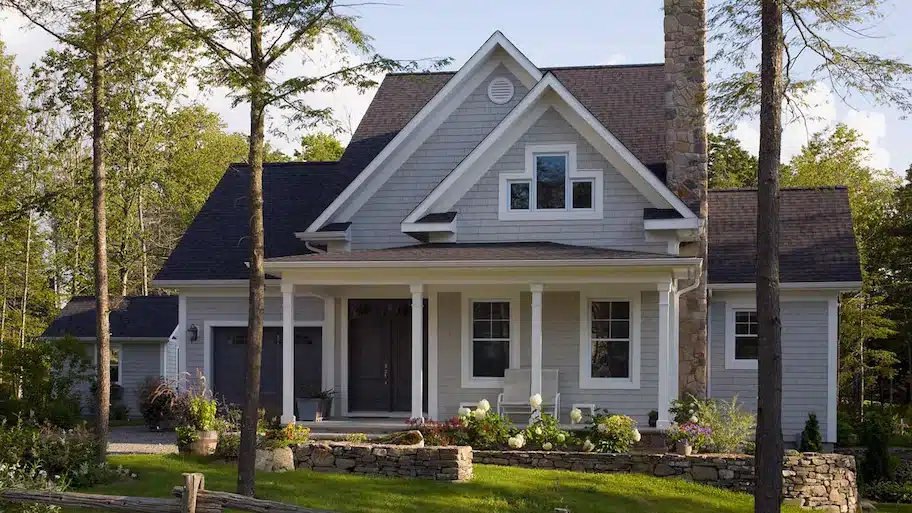
Credit: deeganroofing.com
- Cost-Effective: It’s cheaper to build than a hipped roof.
- Spacious Attic: More headroom for storage or future upgrades.
- Good Drainage: The triangular-shaped slope allows water to slide off easily.
- Easy to Customize: Great for adding skylights, solar panels, or gable vents.
Downsides of a Gable Roof
- Not Great in Wind: The gable ends can catch strong gusts and may collapse if not reinforced.
- Extra Support Needed: You’ll likely need extra framing in storm-prone areas.
- Less Stylish: Compared to hip style roof designs, gables are more common and less “polished” in modern architecture.
Quick Comparison Table
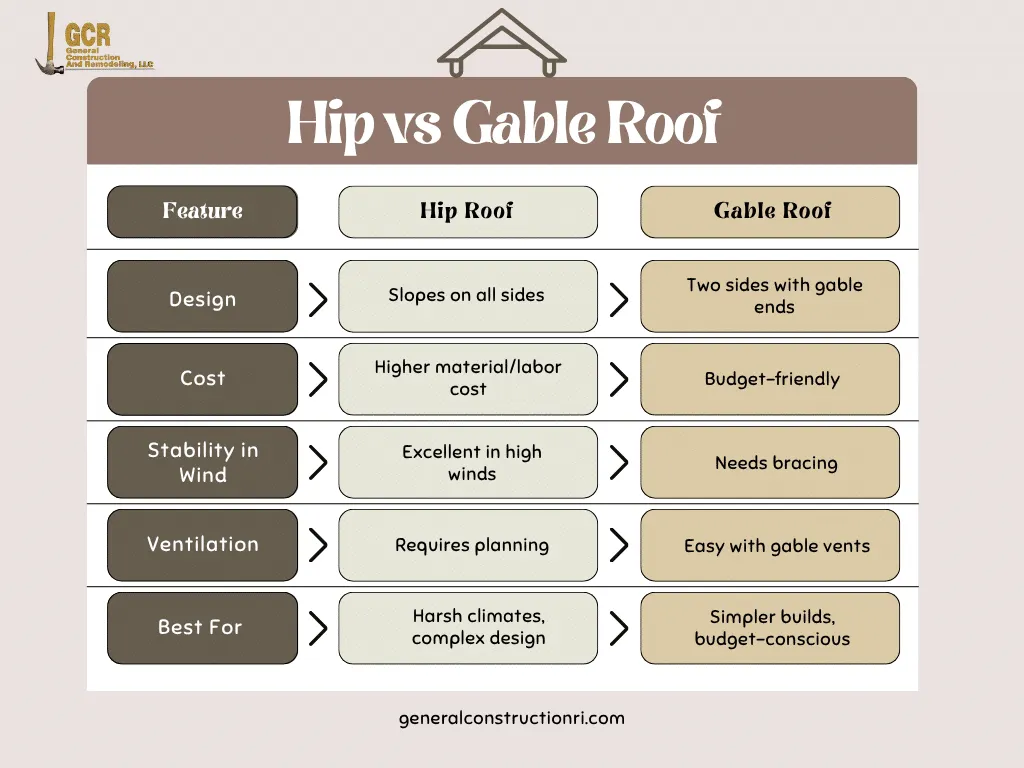
So, what’s the verdict? Team Hip or Team Gable?
This table gives you the highlights, but your dream roof really depends on your home, budget, and vibe.
Still stuck? Don’t worry, and call a pro. They’ve seen it all!
Bonus: What About Gambrel or Mansard Roofs?
If you’re curious about alternatives, here’s a quick peek:
- Gambrel Roof: Like a barn roof, features two slopes on each side, with the upper slope being shallow and the lower one steep. Great for attic space.
Benefits of a gambrel roof include more storage and a classic farmhouse look. - Mansard Roof: A French-style roof with four sides and two slopes per side; steep lower and flat upper. Ideal for creating additional living space.
While stylish, these roof styles are best for certain architectural tastes and may not be as storm-resistant as hip or gable roofs.
Need Help Choosing the Right Roof? No matter if it’s a hip roof, the simplicity of a gable, or you’re considering something totally custom, we’re here to guide you.
Talk to the roofing pros at General Construction & Remodeling today.
Final Thoughts
So, hip roof vs gable roof, who wins?
It depends on your home, location, and personal needs.
Go for a hip roof if:
- You live in a windy or storm-prone area.
- You want a balanced, modern look.
- You’re okay with spending more for long-term durability.
Choose a gable roof if:
- You want to save money.
- You need more attic or loft space.
- You’re in a mild climate and love classic styles.
No matter what you choose, having the right team on your side makes all the difference.
And that’s where we come in; we’ve got the experience to get it done right.
Let’s build a roof that’s not just good-looking, but built to last.

